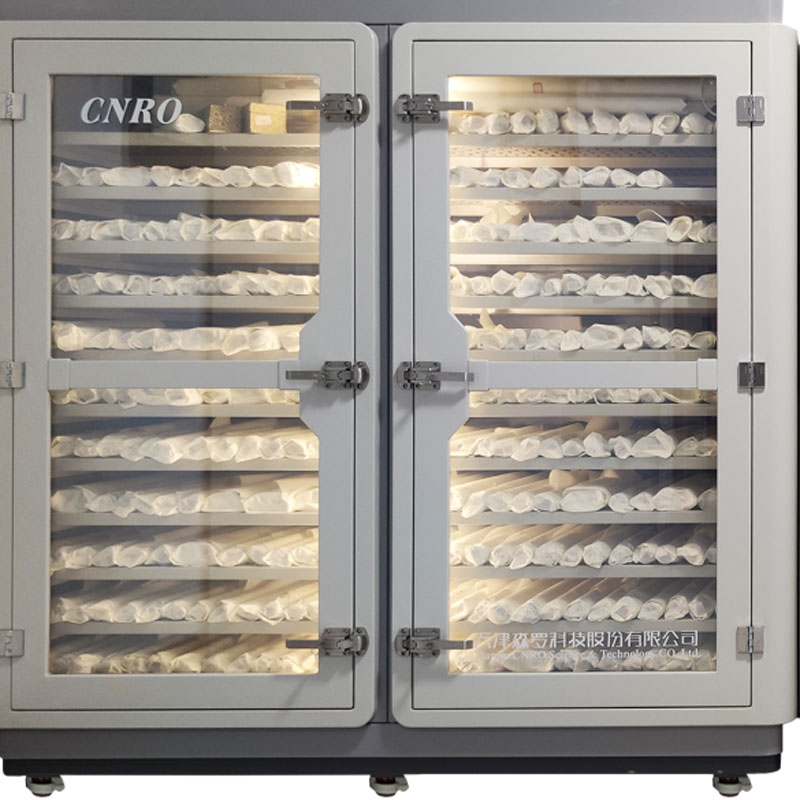How Do Museums Preserve Culture?
- 17 Mar, 2023
- 4246 views
The storage of cultural heritage objects is usually the responsibility of cultural heritage institutions or individuals. Proper storage of these objects helps to ensure a longer lifespan for the objects, while minimising damage or deterioration. With so many different types of artefacts, materials and combinations of materials, the custodians of these artefacts often have considerable knowledge of best practice for storing these objects to maintain their original condition.
Climate control systems in collection storage usually include temperature and relative humidity control as well as ventilation and filtration systems to remove atmospheric contaminants such as dust, chemicals and micro-organisms. The basic idea of climate control is to maintain temperature and relative humidity at a constant rate in order to avoid expansion and contraction of the material, which can lead to serious damage. Climate control is often achieved through the use of HVAC systems, although depending on weather patterns, these systems often require significant amounts of energy to operate, which is a concern for many organisations.

Temperature
In general, the lower the temperature at which collections are stored the better, as chemical and biological reactions tend to intensify as the temperature rises and objects made of materials such as wax may undergo structural damage when exposed to high temperatures. Standard practice for temperature control of general collections is to keep the temperature at 70 °F +/-2 °F or 21 °C +/-2 °C. For certain collections, there are specific temperature recommendations to protect delicate materials. For example, furs, paper archives and textiles can be stored at lower temperatures between 41 °F and 50 °F (5-10 °C), while cellulose nitrate film is usually isolated and stored below freezing because it has the potential to ignite at 106 °F.
Relative humidity
The standard practice for humidity control of collections is 50% +/-5% RH, although the expense required to maintain such a tight RH has been shown to provide only modest precautionary benefits. As with temperature control, the main objective of controlling relative humidity is to avoid major fluctuations that could cause physical damage to objects, with long-term seasonal variations causing more damage than short-term variations. Moisture-absorbing materials such as wood, textiles and bone are particularly sensitive to changes in humidity, as they expand and contract in response to their environment, leading to deterioration over time.

Constant Humidity And Clean Storage Cabinet
Mould growth only occurs when the relative humidity is approximately 70% or higher and insect infestations are more common at higher relative humidity levels. Very low relative humidity (about 35% or less) can cause paper and adhesives to become brittle, as well as wood and ivory to crack and warp. Many museum objects are made up of a variety of materials, so in order to provide the right relative humidity for the whole object, certain materials may be affected. Constant humidity and clean storage cabinet can be equipped with energy-saving control modules such as constant humidity, purification and oxygen regulation, etc. Closing the door can realize constant humidity, cleanness and low oxygen regulation, without power supply.
Monitoring the climate
A continuous monitoring system is essential for the preventive maintenance of objects in the collection storage as it helps to identify any problems, assess the effectiveness of corrective measures and record the effects of unusual events such as leaks, prolonged drought or heavy Rain. A thermohygrometer is a tool for constantly monitoring temperature and relative humidity and, if properly calibrated, it is quite reliable, a task that must be completed at least once every three months, if not more frequently.
The value of these devices is that they constantly record data on a graph for later analysis. Hygrometers, thermometers and thermohygrometers can also be used to determine the temperature and relative humidity of a space, but the most reliable tool is the wet and dry meter. Data loggers are becoming increasingly popular in institutions because of their small size, the ability to record data at desired intervals and the ease with which data can be transferred to a computer in a variety of formats (both graphical and tabular), making it easy to collect and evaluate data.
- Category:
- Arts & Culture
- No comments

